|
|
Post by Dave Homewood on Dec 23, 2010 23:47:42 GMT 12
Good stuff Marcus!
Were aircrfat actually based at RNZAF Waharoa? Or was NZ1013 passing through there I wonder? I thought it was purely a reserve station, unused. I wonder what colour the paint was on NZ1013 in the Hobsonville shot. It looks like primer or maybe a top coat that has been scuffed back?
|
|
|
|
Post by NZ1009 on Dec 24, 2010 0:00:26 GMT 12
and some more - All RNZAF or RNZAF Museum official NZ923, NZ952, NZ984, NZ993, NZ1075. 12 Oxfords in the first trailing formation  NZ970, NZ996, NZ1085  NZ932, NZ927, NZ928, NZ929, NZ923 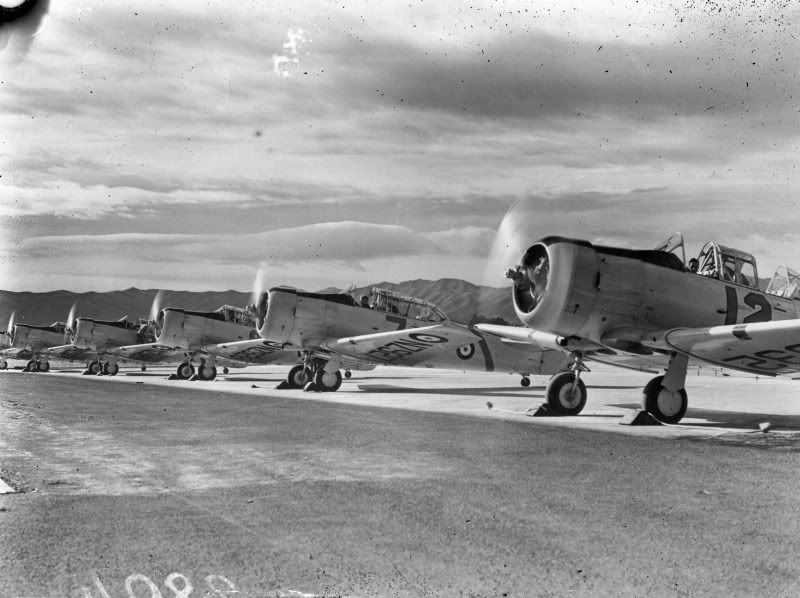 NZ948  NZ926 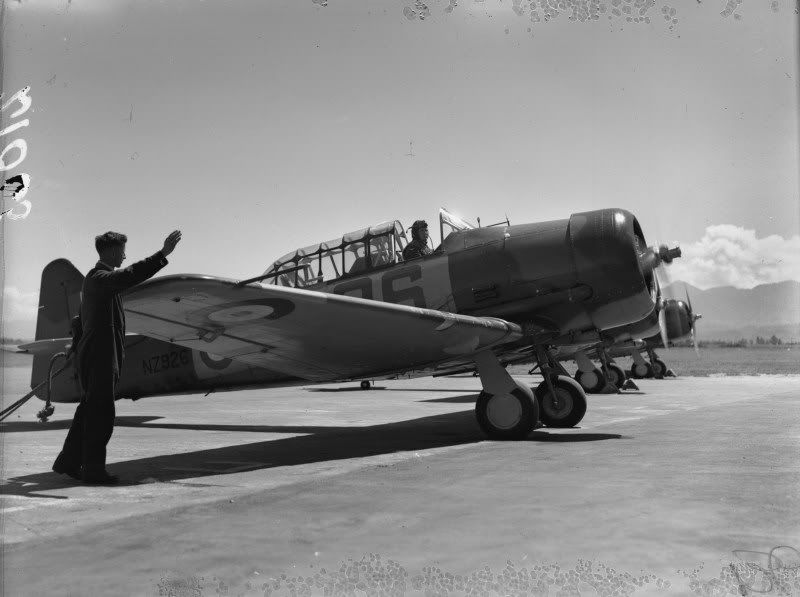 NZ915 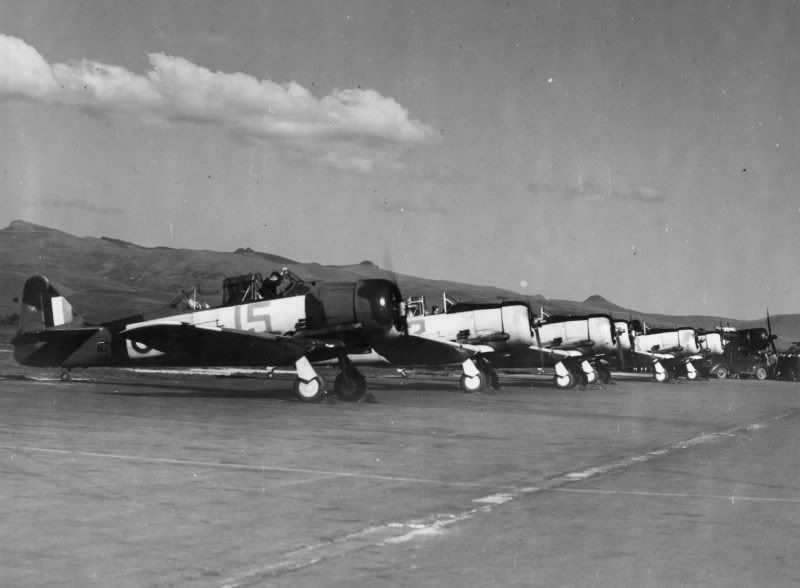 NZ937 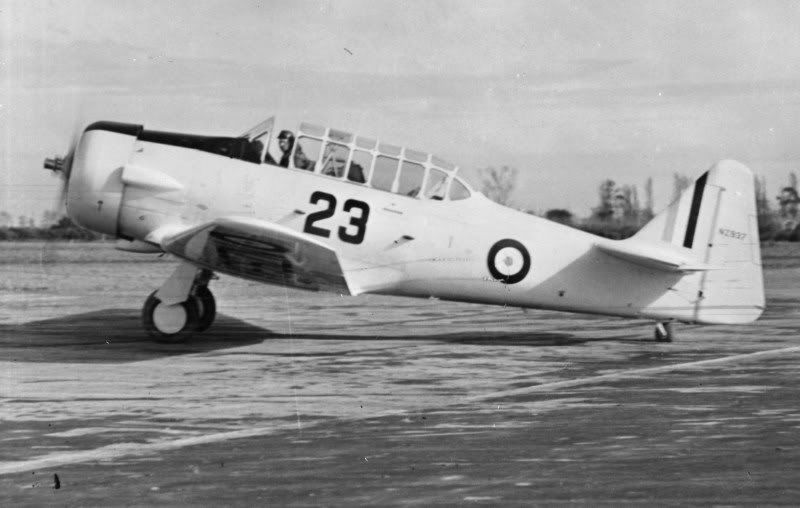 NZ945 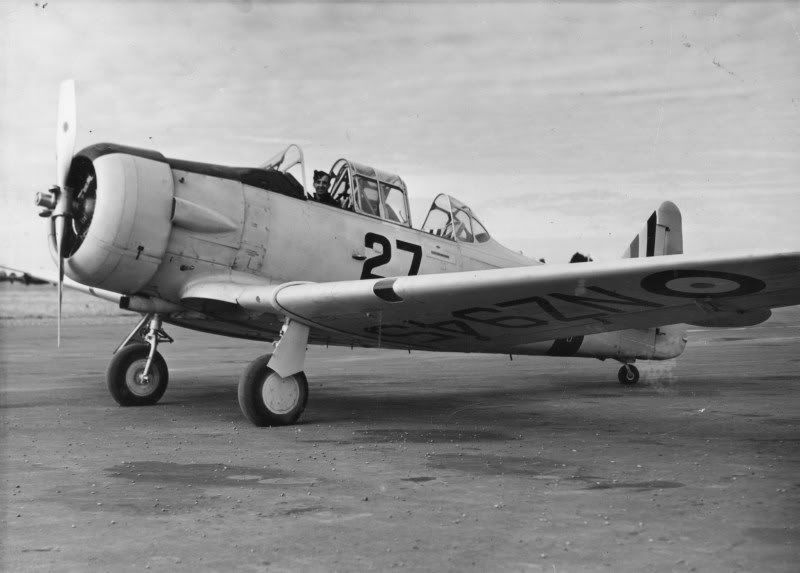 |
|
|
|
Post by NZ1009 on Dec 24, 2010 0:26:37 GMT 12
Overview – The Harvard pilot trainer for three decades - Wings Magazine - 1977
The Harvard was one of the first of the new, modern training aircraft at the beginning of the Second World War and it was allocated to this country because of its commitment to the Commonwealth Air Training Plan which involved the training of pilots, navigators and air gunners.
In the early war years, the RNZAF's three service flying training schools (No 1 at Wigram, No 2 at Woodbourne, No 3 at Ohakea) were equipped with Gordons, Vincents, Vildebeests and Hinds. All were elderly pre-war aircraft which were becoming difficult to maintain because of their age and because of a shortage of spares. The need for a replacement aircraft had become urgent, and New Zealand was allocated an initial batch of 67 Harvard lI's (equivalent to the USAAC's AT-6A), obtained from the United States. With its 600 hp Pratt & Whitney Wasp engine the Harvard was a vast improvement on the open-cockpit biplanes it was replacing. It was faster, could climb faster and had a much greater endurance. But to the pilots who came to it from the 130 hp Tiger Moths of the elementary flying schools, it was a big, all-metal monster!
The first 12 Harvards arrived at the assembly depot at Hobsonville from the United States in March 1941; the remaining 55 arrived two months later. They were allocated serials in the NZ900-NZ1100 range. Of the initial 67 aircraft, three (NZ901, NZ902, NZ904) went to the Central Flying School at Tauranga for instructor training and the others were issued to Woodbourne, Wigram and Ohakea, with training on them getting underway almost immediately.
The RNZAF continued through 1941 with these Harvards, until another batch of 38 Mk II's arrived on charge at Hobsonville in January 1942, to bring the total number of the type on strength to 105 (NZ901-NZ1005). By this time, however, the pace of the war had changed. In December 1941 the Japanese had begun hostilities and the RNZAF suddenly changed from being largely a training organisation to one capable of playing its part in the defence of the country and also in despatching units to the forward areas in the Pacific.
An extensive re-organisation of the flying training schools resulted in the disbandment of No 3 SFTS at Ohakea, and the station became an operational training unit. Nos 1 and 2 SFTS's were expanded and in June 1942 it was decided to standardise training at the two stations.
Wigram was to become responsible for multi-engine training, equipped with Oxfords, while No 2 SFTS at Woodbourne was to be given to one-third multi-engine and two-thirds single engine training. Thus, most of the FTS Harvards were shifted to Woodbourne, and at its peak the station had some 60 Harvards on strength.
The Harvards at the SFTSs were also readied to play their part in local defence. Under the Forces Available For Anti-Invasion scheme they were organised into fighter-bomber squadrons equipped with light bomb racks and machine guns, although their active services were never called upon.
Harvards were also allocated to the new No 2 (Fighter) Operational Conversion Unit that had been formed at Ohakea as well as the new No 14 Squadron which was formed from the survivors of No 488 Sqn which had fought in Singapore. Eventually, these Harvards were replaced by arrivals of P-40 Kittyhawks, but throughout the war RNZAF fighter squadrons (and a number of others) under training in this country usually had at least three or four Harvards on strength.
From September 1942 the RNZAF's Harvard numbers were reinforced by further arrivals from overseas. Over the next year another 52 aircraft (NZ1006-NZ1057) were delivered, all of them the Mk IIA version (or AT-6C). This differed from the Mk II in having a plywood and low alloy steel rear fuselage instead of the previous light alloy monocoque construction. It was a wartime economy measure that was said to save over 1,200 lbs of aluminium alloy per aircraft.
With the greater number of Harvards now in service, the type began to trickle into all sorts of air force units, for all types of work. They were used for everything from OTU training to drogue towing, Army co-op (some short-lived Army co-op squadrons replacing Hinds with Harvards), station flights and communications units. In their first year or so of service Harvards were even allocated to technical training schools as instructional airframes.
In October 1943 the RNZAF received the first of 41 Mk III's (NZ1058-NZ1099), in which construction had reverted to all-metal as it had been found the shortage of strategic materials was not as pronounced as had been originally thought. These aircraft differed from the earlier Mk II's, though, in having a 24 volt electrical system. The Mk III's continued to arrive over the next 12 months until the final Harvard was taken on charge in November 1944. Among these final aircraft, however, were a number of strangers. They included NZ1070 which was in fact a Mk IIA with the wooden rear fuselage; it was received in bad condition and was never flown with the RNZAF and was stored until May 1954 when it was broken up at Woodbourne. The others were three Mk IIB aircraft (NZl100, NZ1101, NZ1102) which was a version of the Mk II built in Canada by the Noorduyn Aircraft Company, and known in the United States as the AT-16.
By late 1944 RNZAF strength in the Pacific had readied its peak and with the likelihood of a Japanese invasion receding the Air Force's main objective changed to one of supporting the squadrons in the Pacific area. As a result there was general pruning and re-organisation throughout New Zealand, including a large reduction in the size of the flying training organisation. No 2 SFTS at Woodbourne was closed down, after training some 1,540 pilots, most of them on the Harvard, and it was amalgamated with No 1 SFTS. So once again Harvards returned to Wigram in large numbers, and Woodbourne became the home of the Central Flying School which had shifted from Tauranga.
With the sudden end of the war in August 1945 the operational side of the RNZAF largely ground to a halt and the hundreds of aircraft then in service were withdrawn from use and stored at locations throughout the country. Of the surviving 150 or so Harvards, all of the Mk II's and a large number of the Mk III's were stored at Wigram, while the IIA's went into storage at Ashburton, which had latterly been the home of No 2 EFTS.
When flying training got underway again in 1949 and with the establishment of the Compulsory Military Training scheme, Mk Ill Harvards were taken out of storage at Wigram and sent to Woodbourne, by now the RNZAF's main repair depot, for overhaul and re-issue to Wigram.
The four territorial Air Force squadrons had been formed at this time, also, and they were issued with Mk IIA's from Ashburton. From about 1953 the Mk III's were again withdrawn from service at the Flying Training School at Wigram and their place taken with Mk IIA's overhauled to IIA* standard. Some of these ex-Wigram Mk III's later saw service with the TAF squadrons following the withdrawal of their Mustangs in late 1955. But when the Territorial Air Force was disbanded in mid-1957 all of the Harvard Ill's were sent to Woodbourne for overhaul and they were issued to Wigram while the Mk IIA*'s went back into storage, except for a few kept as station hacks or with No 42 Sqn at Ohakea.
The Mk II's which had gone into storage at Wigram at the end of the war were not flown again (with the exception for a short period of NZ1004); some were issued to technical training schools as instructional airframes and in 1959, 59 survivors of the original 105 plus two IIB's were sold to Bennett Aviation at Te Kuiti for scrap. Parts of these aircraft were used in the short-lived Bennett Airtruck topdressing aircraft project while other fuselages went to community organisations for use in children's playgrounds. These can be seen in Tauranga, Takapau, Pahiatua and Methven, while one other aircraft went to the Museum of Transport and Technology in Auckland.
Since that time disposal of Harvard airframes has been piecemeal; NZ1077 was sold in 1964 and is now at a playground in Ashburton~ in October 1971 two aircraft (NZl041, NZ1044) were given to the technical training schools of Air New Zealand and NAC respectively, in 1972 NZ1069 was sold to enthusiasts in Auckland for restoration, and NZ1058 has recently gone to the Ferrymead Aviation Society in Christchurch.
But whatever happens to the remaining Harvards in New Zealand, the RNZAF has ensured that at least one will remain to demonstrate the unique role the aircraft has played in the training of military pilots in this country over the past three decades. To mark the 50th anniversary of the formation of the NZ Permanent Air Force in 1973 it was decided to mount a Harvard at the main entrance to Wigram. Accordingly, a Mk IIA, NZ1050, was taken out of storage at Woodbourne and repainted in the all-yellow World War Two training scheme with the large numerals "050" painted in red on the fuselage sides. The memorial was officially unveiled on June 14, 1973.
Most New Zealanders, with the exception of those living in Canterbury, have seen the Harvard in latter years mostly in its role as an aerobatic aircraft, being first used in this role at Wigram in 1948. This team was later disbanded but was reformed five years later with two aircraft. Two years later a third Harvard was added, and the team performed throughout New Zealand until 1958 when a fourth aircraft was added. A fifth was added in 1966 to become the solo aerobatic aircraft, with the other four providing formation displays.
In 1967, at the ceremony marking the 50th anniversary of flight at Wigram, the previously unnamed team was officially christened the Red Checkers, and distinctive red and white checks were painted on the engine cowlings of the aircraft. The team went into recess during 1973 but was reformed late the following year for a display at the RNZAC pageant at Tauranga in March 1975. For economic reasons this performance did not go ahead, which was the fate of another proposal to reform the team for a final, farewell performance earlier this year.
During the mid-1960's the Harvard took on another specialist role in the RNZAF, that of forward air control, directing strikes by jet aircraft from over a target area. Specialised FAC training began in 1965 at about the time the RNZAF's primary combat role was defined as close air support. Two Mk IIA's (NZ1017, NZ1056) were issued to 14 Sqn and they were fitted with VHF, UHF and FM radio equipment for communications through normal air/ground channels, to airborne strike aircraft and to troops on the ground. They are also the only Harvards in the RNZAF devoid of the high visibility grey and red colour scheme.
The first Harvards delivered to the RNZAF carried the Commonwealth Air Training Plan scheme of gloss natural metal with yellow bands arrived in the Lend-Lease scheme of silver overall with yellow bands around the mainplanes. Following the entry of Japan into the war dark green and dark earth camouflage was applied, although the training aircraft retained yellow undersurfaces, and bands over the wings and panels on the fuselage sides. Those attached to operational units had duck egg blue undersurfaces. However as the danger of Japanese invasion diminished the yellow training scheme reappeared together with the overall silver/yellow bands scheme.
After the war the Harvards lost all their camouflage and training colours and appeared in overall natural metal with yellow bands around the rear fuselage and mainplanes, and large black numerals on the fuselage sides. Serials were also carried in black underneath the mainplanes. From 1961 the yellow bands were replaced by day-glow orange on wingtips and the rear fuselage, with the exception of the rudder. However this was a very expensive colour scheme to maintain and in early 1970 the present dove grey/international orange was introduced. And this will be the colour scheme in which the Harvards are retired. Today the RNZAF operates 16 Mk III and two Mk IIA* aircraft with the Pilot Training Squadron at Wigram and the two Mk IIA*'s with No 14 Squadron at Ohakea, plus about a dozen Mk IIA*'s in storage at both Wigram and Woodbourne.
On withdrawal from active service all will be passed to the Government Stores Board for disposal, and it be largely in its hands how many remain in this country for either display or flying purposes.
|
|
|
|
Post by Dave Homewood on Dec 24, 2010 0:26:44 GMT 12
That's a lovely selection of wartime colours there. The first photo in that bunch of the Harvard formation and the Oxford formation is neat. Have you any idea what it was about? Some special flypast? Or just a formation cross country?
|
|
|
|
Post by oggie2620 on Dec 24, 2010 1:15:13 GMT 12
According to John Golleys Aircrew Unlimited the 20,000 Harvards are looked back on with nostalgia by anyone who underwent aircrew training...
|
|
|
|
Post by NZ1009 on Dec 24, 2010 8:19:15 GMT 12
and speaking of nostalgia, I think the following is a good example:
Tales of the Harvard by Ross Ewing (Wings, August 1976, p21)
I parked my bike against the hangar and looked around. There was no one in sight. I scampered over and like so many other 10 year olds had done in the past, and many more were to do in the years to follow, I goggled at my first Harvard. The relatively large aircraft (relative to me that is) stood silver and yellow above me, its prominent black aerial sticking up just forward of the tandem cockpit. This particular Harvard had not long landed and its engine tick-ticked away as it cooled down. I jumped up onto the wing and peered into the half open front cockpit. So this was where my boyhood heroes did their aviating. It's funny, but aircraft smell, I was to remember that same smell when, seven years later, I again climbed into a Harvard cockpit, this time as a trainee pilot at the RNZAF's Flying Training School at Wigram. The first thing that confronted the "boggie" student pilot were the complicated-sounding lectures on Harvard electrics and hydraulics, and fuel system, followed by several hours sitting in the cockpit while on the ground getting familiar with the fairly basic but seemingly overwhelming array of dials and switches. This pre-learning was not confined only to the cockpit; students (but not instructors, it so appeared) were expected to know the outside of the aircraft just as well - like what each of the half dozen or so drainage pipes cluttered just aft of the engine were for; really handy information that! I remember that battery and oil system breather vents were two of.....
Then it was into the air and 10~15 hours of dual from "the back". Nothing too tricky initially, with stalling and circuits high on the agenda. The Harvard was a classic staller but had quite a bite for the unwary, probably one of ha greatest attributes as a trainer of good pilot. This pre-solo period was quite something to behold from amidat t Air Force's training area centred on Lake Ellesmere, south of Wigram. Restricted Zone 78, known colloquially as "The Wedge" (from the shape of its airspace), would be filled with silver machines making curious descending approaches to dummy aerodromes laid over various paddocks, while others, their undercarriages down, were climbing descending and periodically falling through the sky all around. The precise climbing and descending exercises were exasperating; the instructor was performing miracles from the back seat as he set boost to within 1/10 of an inch, and RPM and rate of descent with no error at all, or he knew some trick that we did not know about.
The beauty of the Harvard was that there was virtually nothing that could not be demonstrated, short of assymetric or supersonic flight -although some of the more ham types did their best to approach the latter. The aircraft was capable of virtually all acrobatic manocuwes (albeit without sufficient power for some) from hammerstalls, vertical eights and ozzle-twizzle spins to bunts, outside turn and flick rolls. Admittedly, the engine did cut out as soon as the aircraft went inverted, but with judicious use of the hand fuel pump a certain amount of power could be retained. Such engine running did, however, sound rather horrible from the ground and this, coupled with a lack of oil pressure in certain parts of the engine, caused the technique to be discontinued.
In the circuit, the Harvard could be fairly demanding although if the pilot knew his stuff it was quite predictable. Forward visibility was not good due to the tailwheel configuration and there are pilots who have hair-raising propellor-chomping stories to tell of aircraft running into one another on the ground. But perhaps its most infamous characteristic while on or near the ground was its ability to drop a wing during the landing phase, a characteristic enhanced mainly by student pilot inexperience. What made things a little tricky when this happened was that subsequent use of rudder in the recovery was completely different, depending on whether the main wheels were on the ground or not, if airborne - pick the wing up with opposite rudder; if on the ground - force the other wing down with same rudder. Closely associated with this unfortunate trait was "the dreaded ground loop". It was said the RNZAF has two types of pilot, those who had ground-looped a Harvard and those who were going to. Here, the manoeuvre was not entirely a function of pilot skill. The Harvard had a limited castoring tailwheel which could, however, be fully unlocked outside its normal angle of about 200 left and right by use of assymetric brake. So, get a faulty brake after landing, be a little coarse with the rudder, or hit a stone, and....BlNGO.... around you would go! Generally, a ground loop was not too expensive (except when clanged in the bar that night), as long as there was not too much forward speed, which could side-stress the main wheels.
While a little slow by modern standards (cruise 120 kts, max cruise 145 kts, max lAS 205 kts), the Harvard was certainly versatile; night flying, instrument flying, navigation and weapons training were all easily taken in its stride. Students and instructors alike will remember the numerous navigation flights on which the Harvard took part. These varied from flashing over the Otago, Canterbury and West Coast countryside at 250 ft AGL, to longer, higher but just as spectacular hauls along the Southern Alps. Front seat heater (the only heater) full on, instructor in the back seat with four jerseys, long underwear, flying suit and flying jacket... and frozen!
Navigation aids in the Harvard have always been rather basic. Until about 1960 the Harvard fleet was fitted with a radio ranging device (basically an HF receiver, and hence that big black aerial) with which the pilot could (supposedly, said some) home onto a ground station and also calculate his range from the station. But since then the equipment has been limited to one VHF set.
Weapons carried by the Harvard over the years included rockets, machine guns and various sizes of bombs. The rocket firing was discontinued in the 1950's as the type of rocket used proved too unreliable, but bombing and gunnery were carried out until just recently.
The aircraft left something to be desired as a weapons platform but was very popular in this mode as, although hardly realistic in today's weapons world, it was a lot of fun.
One of the more spectacular activities associated with the Harvard is the field of display flying, both solo aerobatics and as a formation acrobatic team. Pilots who have flown in such a capacity describe the experience as truly unique, and those who have watched from the ground will not easily forget the impressive sight and sound of three, four, or in the latter years, five-man acrobatic teams.
The snarl of five P & W Wasp radial engines, all at maximum RPM, on display day is now a thing of the past, but even on its own the Harvard had a distinctive sound which will not easily be forgotten by those exposed to it over the years. The sound became even more distinct on extremely cold winter mornings at Wigram when, as the aircraft took off, their propellor tips went supersonic. This phenomenon was brought about by the very low air temperatures increasing the true air speed of the tips, causing a supersonic crackle which could be heard above the engine's penetrating growling rattle.
Like the airframe it hauled, the Wasp engine epitomised reliability. Although there have been several engine failures in more recent years, the age of some components perhaps starting to show after 35 years, the aircraft flew for decades with no serious in-flight failures. To the best of my knowledge there were no fatalities directly due to mechanical malfunction. What better tribute, not just to the aircraft and its designer, but equally to those who have serviced the Harvards over the years. The immaculate condition of the aircraft, even on this eve of their departure, is typical of the RNZAF technical world's extremely high ability to preserve and yet get the full use out of its equipment, something for which it has a world-wide reputation.
"Tales of the Harvard" are endless... such as the one about the pilot on Army co-op buzzing the troops in the exercise area, and it appears becoming a little persistent in so doing. Finally, his friends on the ground could take it no longer. On the next nerve-shattering, tree-top swoop over the heads of the grunts a sizeable log was tossed up and into the engine, where it sat in the radial cowl. The "attacked" pilot quickly left the scene and limped back to base nursing a rough-running engine with high cylinder-head temperatures!
Then there was the young fellow who took his low flying to the extreme by hitting a truck with his wing; he made it back to base, but his aircraft had been severely "modified". Or the other chap who scooped out of a slow roll over the sea so low that he knocked his tail wheel off on the water -- but did not damage his propellor!
So now, apart from perhaps a final farewell fly-past over Wigram and the Canterbury Plains with which the Harvard has become synonymous, the aircraft is about to depart New Zealand skies forever, at least in its traditional military role.
|
|
|
|
Post by hairy on Dec 24, 2010 19:55:17 GMT 12
NZ1015 over the Canterbury plains.  NZ1016 at Whenuapai. 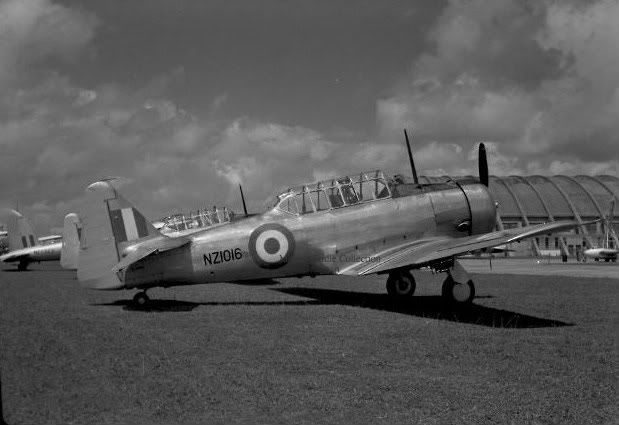 NZ1017 at Whenuapai. 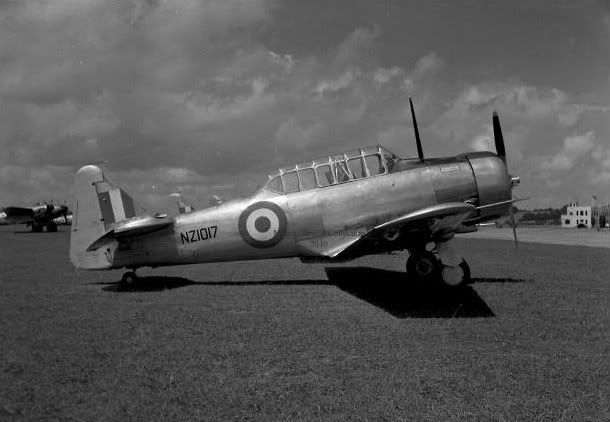 NZ1017 at Mangere. 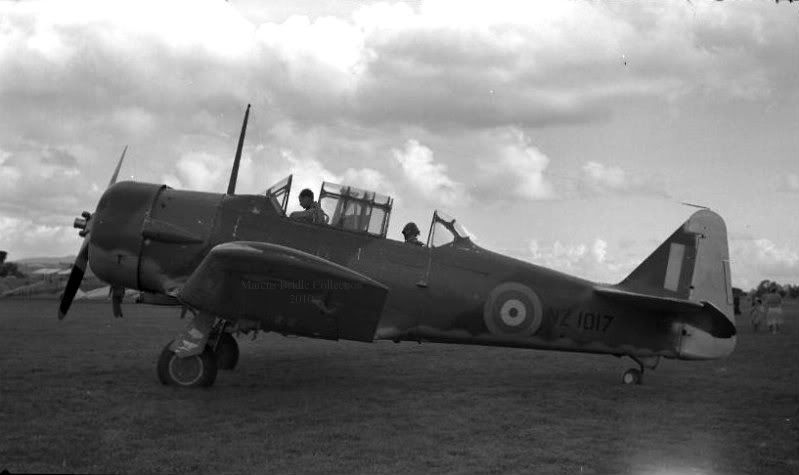 NZ1039 over the Hauraki Gulf in 1946. 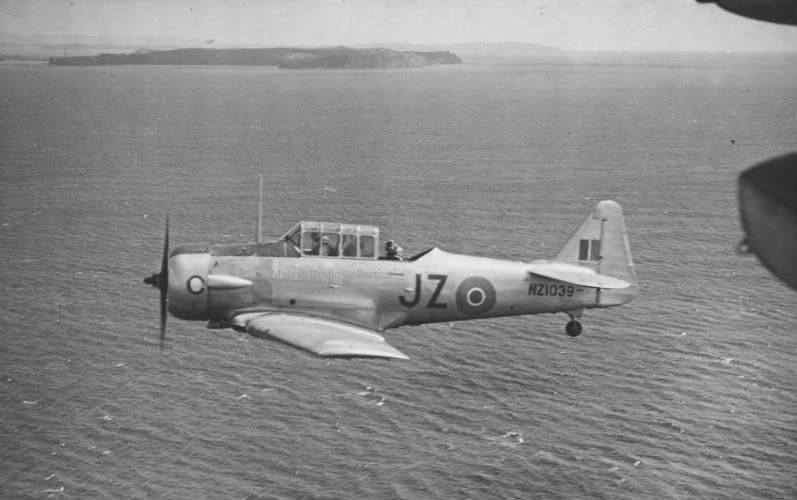 NZ1043 at Hobsonville. 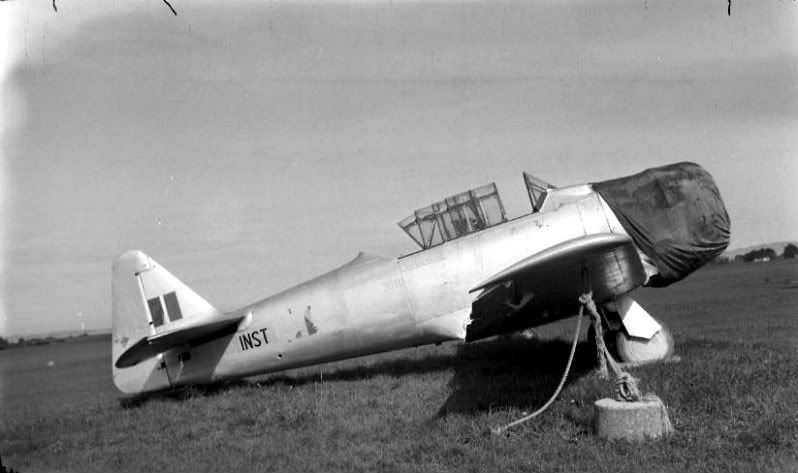 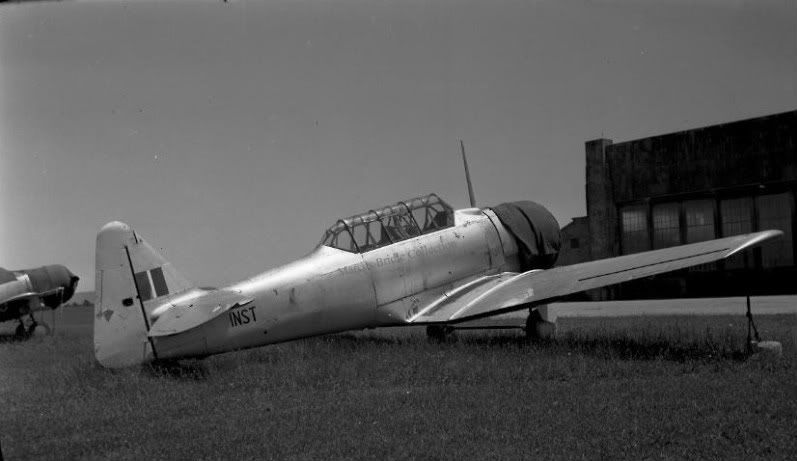 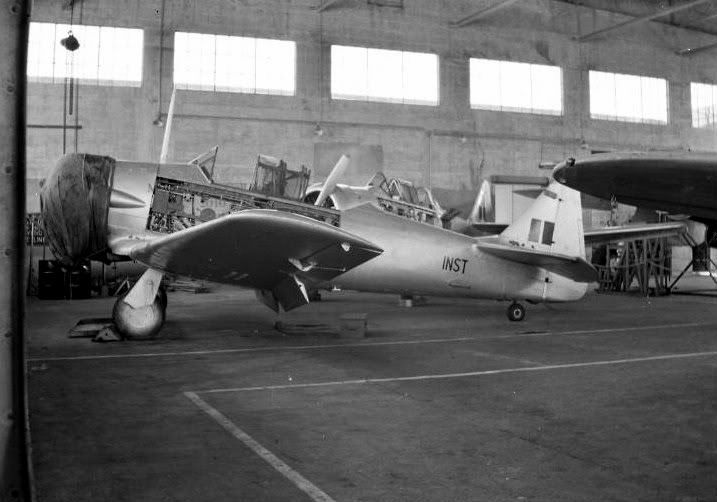 NZ1060 at Wigram 1966. 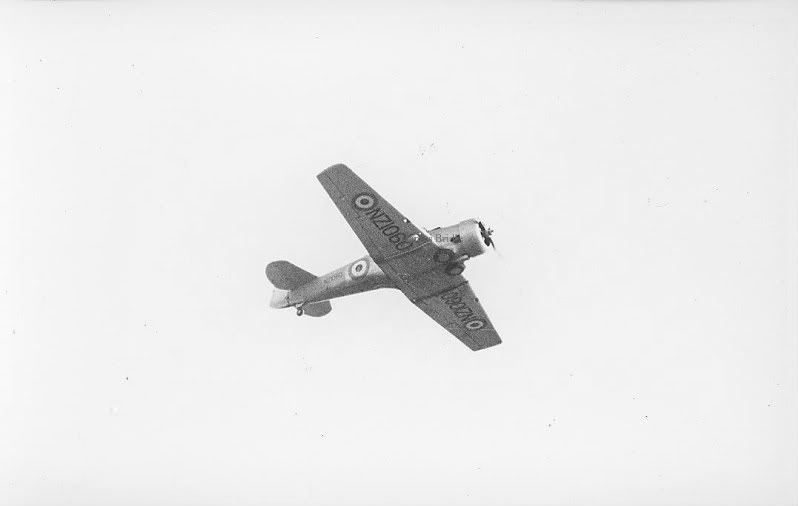 NZ1063 at Ohakea, January 1946.  More to come.  |
|
|
|
Post by NZ1009 on Dec 25, 2010 16:08:56 GMT 12
All RNZAF or RNZAF Museum official: NZ969, NZ982, NZ1002 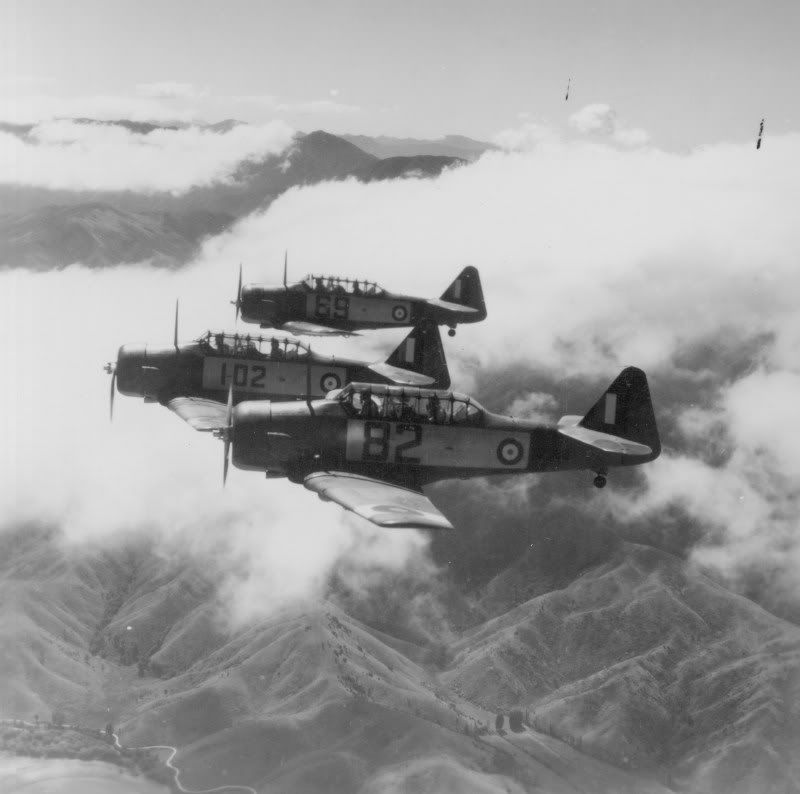 NZ1083 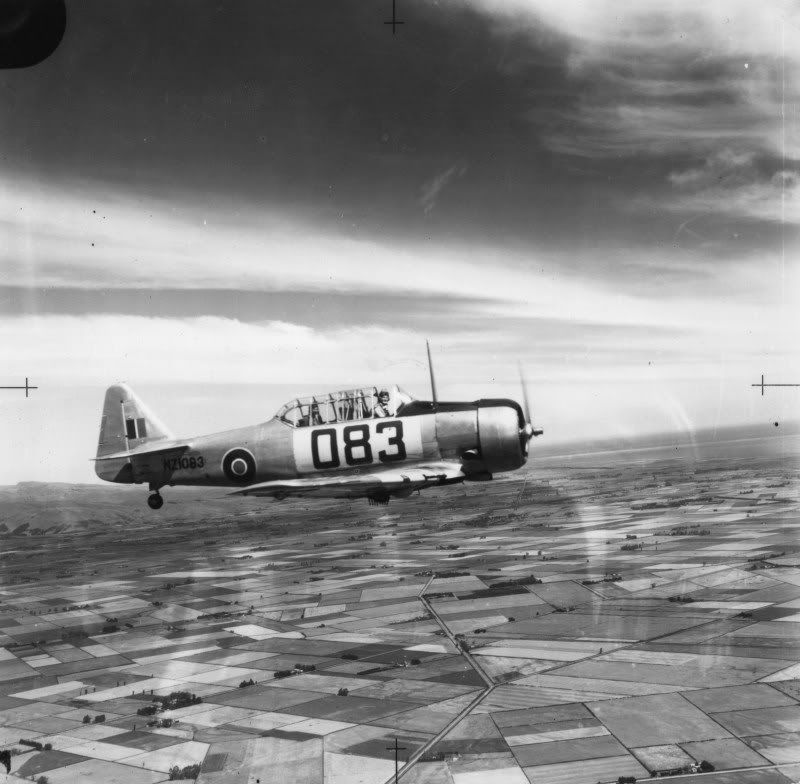 NZ935, NZ914  NZ1001 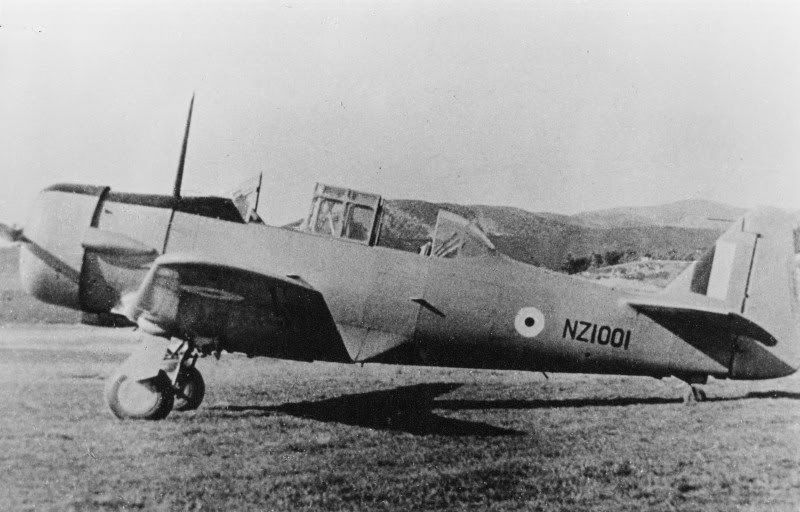 NZ905  NZ904, NZ909, NZ910, NZ913, NZ925, NZ952, NZ1082, NZ1084, NZ1086 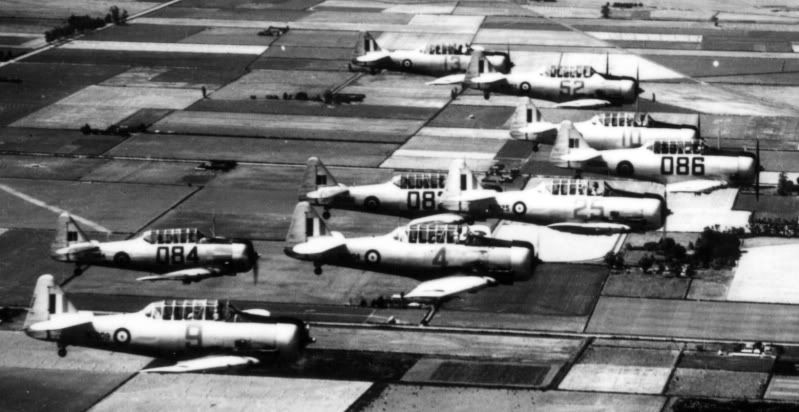  |
|
|
|
Post by hairy on Dec 25, 2010 17:23:50 GMT 12
|
|
|
|
Post by strikemaster on Dec 25, 2010 17:30:10 GMT 12
I find it incredible the amount of different paint schemes on these aircraft over the years. Ground crews must have been flat out.
|
|
|
|
Post by baz62 on Dec 26, 2010 9:04:04 GMT 12
I find it incredible the amount of different paint schemes on these aircraft over the years. Ground crews must have been flat out. Would certainly keep the modelers of today busy! |
|
|
|
Post by mit on Dec 26, 2010 10:46:25 GMT 12
On an exercise over the Canterbury Plains with a single bomb rack attached. (RNZAF Museum).  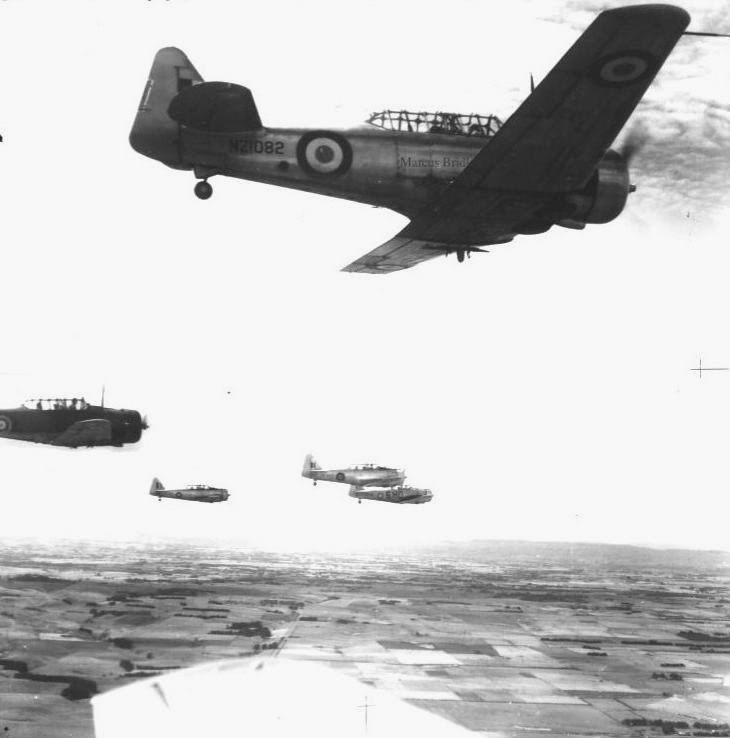 The single bomb rack is actually a target towing rig.  |
|
|
|
Post by Dave Homewood on Dec 26, 2010 23:24:02 GMT 12
Here is an article from Papers Past about the Air Training Corps Touring Unit that had a Harvard exhibit. There is a photo of this unit in an issue of Contact magazine but I think a better version has been posted on here before. Someone out there may have it and can post again. paperspast.natlib.govt.nz/cgi-bin/paperspast?a=d&d=EP19440713.2.43&cl=search&srpos=4&e=-01-1941--12-1945--10--1-byDA---0r%2en%2ez%2ea%2ef%2e+harvard--&st=1AIR TRAINING Evening Post, Volume CXXXVIII, Issue 11, 13 July 1944, Page 4 AIR TRAINING INSTRUCTION UNIT The mobile instructional unit of the Air Training Corps which provides an insight into the various forms of aircrew training will be on view in the Wellington district from tomorrow. This interesting display of Air Force training equipment will be at Lower Hutt tomorrow and at Eastbourne the following day. On July 21 it will move into the city and will be located at Liberty Corner. The next day a visit will be paid to Paraparaumu and the remainder of the month will be devoted to touring the suburbs. In all towns where it has been shown the Air Force display has been described as the most interesting exhibition of the war period. With skilled technicians and instructors accompanying the unit, parents of Air Training Corps cadets are able to gain from their explanations and actual demonstrations a fairly complete picture of the work their sons are doing. EQUIPMENT DESCRIBED. Consisting of three modern transport vehicles equipped as mobile workshops and display booths, the unit marks a departure in technical air training, and presents an aeronautical exhibition of unusual interest. Manufactured and assembled almost entirely in R.N.Z.A.F. workshops, the unit travels as a road convoy. The first two vehicles are large pantechnicons. One is so constructed that one side will fold down to floor level, the lowered side becoming a platform. This vehicle contains several aircraft engines, all sectioned in a way that allows the layman to see how they function. On the second vehicle is mounted a Harvard training aircraft complete but for the wings and tail unit, and in every other way an exact counterpart of those in which Air Force trainees receive their early flying instruction. Cadets can climb into the aircraft and operate the controls, causing the undercarriage to go down and retract. Tne third vehicle carries the armament display, a notable feature of which is the Bolton Paul gun turret as used in certain types of Allied bombers. Because of its size and the maze of electrical gear, the gun turret—which mounts two Browning air machine-guns—has attracted wide interest. Other features include a 20 m.m. air cannon, sectioned bombs, bomb-racks, bomb-sights, air cameras, wireless equipment, and other interesting pieces of Air Force apparatus. While the unit offers a great general appeal, its primary purpose is a means of providing a material background to the studies of the Air Training corps. The purpose of the tour is to augment the equipment already in ilus at the A.T.C. units visited and to stimulate recruiting throughout the Dominion. |
|
|
|
Post by Dave Homewood on Dec 26, 2010 23:34:44 GMT 12
Here is another article from Papers Past on the same display as above:
AIR FORCE TRAINING
Evening Post, Volume CXXXVI, Issue 89, 12 October 1943, Page 4
AIR FORCE TRAINING
TRAVELLING EXHIBITION
An inside view of the technical section of the Royal New Zealand Air Force will be afforded to parents and interested members of the public during a tour of the Dominion by the Air Training Corps Mobile Instructional Unit, arranged by the New Zealand Headquarters of the Air Training Corps, in conjunction with officers commanding the various squadrons and school units throughout the Dominion.
Consisting of three vehicles fitted up as mobile workshops and-display booths, the unit is a new departure in air technical training either in New Zealand or abroad. In its stationary and opened state, it is comparable with the elaborate aeronautical pavilion shown at the Centennial Exhibition at Wellington in 1940.
It was almost entirely manufactured and assembled m the workshops of the R.N.Z.A.F. The unit travels as a road convoy. The first two vehicles are.large pantechnicons with sufficient headroom S for the tallest of visitors. No. 1 is built to allow the whole of one 1 side to fold down to floor level, as a I platform. This vehicle contains a variety of aircraft motors. The high light is a large seven-cylinder radial motor, thoroughly sectioriised, and slowly "ticking over" to the power of an electric motor through a reduction gear.
Other items are carburettors from modern fighter and bomber aircraft, some of these components alone being comparable with the size of a large motor-cycle engine. Vehicle No. 2 is a large truck chassis on which is mounted the whole of a Harvard fighter trainer aircraft, less the wings and tail unit, which would make it too bulky for road travel. The aircraft is otherwise exactly the same as its flying counterparts in service with the R.N.Z.A.F. from its motor and propeller down to the last instrument and light in the dual cockpits. The Harvard's hydraulic retractable undercarriage has been retained in the display, although its compressor is operated by an electric motor owing to the impossibility of operating it .in the original manner. Thus, it is possible for cadets to get into the cockpit and operate the controls causing the undercarriage to go down and retract. Similarly, the hydraulically-operated fuselage flaps can be worked from the cockpit.
Vehicle No. 3 is the armament display. The rear of this vehicle draws out in telescopic fashion, a fully operational Bolton Paul gun turret from a Lockheed Hudson bomber aircraft being mounted on the end of the telescopic section. On account of its size and its maze of electrical gear, the turret, which mounts two Browning air machine guns, will attract wide interest. It is arranged to work exactly as it originally did on a bomber, and a moving model aircraft is incorporated in the unit to allow cadets to get in and operate the turret and line up the modern reflector sights on the model in the same manner as an air gunner on active service. Other exhibits include a 20mm air cannon, sectionised bombs, air cameras, bomb-sights, a representation of all the impedimenta of modern, air warfare.
"All this sounds like jolly good and interesting entertainment," said Wing Commander G. A. Nicholls, the Commandant of the Air Training Corps, when outlining arrangements for the visit, "but it has a very practical value from an educational point of view. The unit will allow parents to see what a great technical training the servicing section of the A.T.C., and later the R.N.Z.A.F., offers young men of New Zealand.
Samples of work carried by the unit show how Air Force trainees reach an amazingly high standard of work in a matter of weeks, and how finished technicians are trained in a matter of months. The transition from layman to technician in the R.N.Z.A.F. is so rapid that it has to be seen to be believed. The Mobile Instructional Unit offers visual testimony to this fact. The Air Force technician is the most thoroughly trained in the world, and' though he can turn out a micrometer, movable wrench, or a pair of callipers from a lump of steel with only a file and a hacksaw, he can also discuss metallurgical theory, mensuration, or internal combustion engine science with, any expert in the engineering field."
|
|
|
|
Post by NZ1009 on Dec 27, 2010 8:37:16 GMT 12
All RNZAF or RNZAF Museum official: NZ903  NZ920 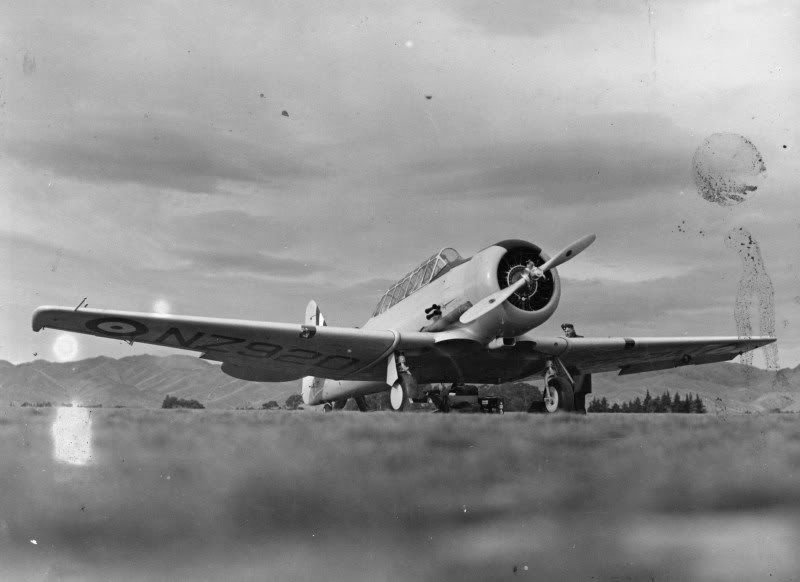 NZ1027  NZ1046 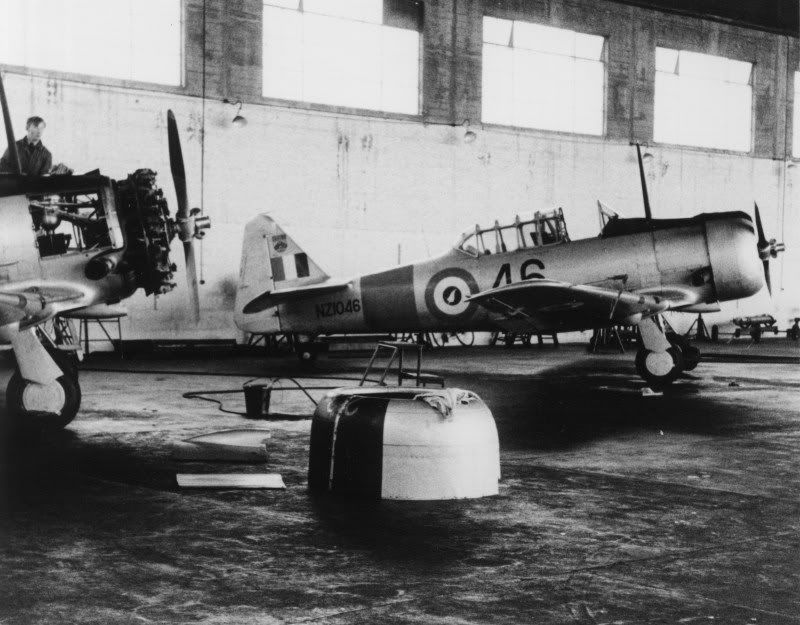 NZ1050  NZ1066  NZ1087  NZ1087  |
|
|
|
Post by shorty on Dec 27, 2010 9:01:34 GMT 12
That picture of NZ 903 at Rongotai is a perfect example of how misleading orthochromatic film can be.
|
|
|
|
Post by NZ1009 on Dec 27, 2010 9:40:09 GMT 12
|
|
|
|
Post by Dave Homewood on Dec 27, 2010 12:25:22 GMT 12
Those dark glossy blue Harvards with the French markings are interesting ;D ;D (Only kidding!)
I wonder how long NZ1087 actually flew with the Raspberry Ripple markings. Was it very temporary or was it stuck with the scheme till the next scheduled repaint?
The Air Force Museum could and perhaps should create a really good temporary exhibit on the work and versatility of the Harvard in RNZAF service. They could have loads of these photos with detailed captions of the roles they fuilfilled, models of the various Harvard schemes, old and modern film footage playing, maps of all the stations and bases where the Harvard has been based at, personal memories from pilots who flew the type, etc. I reckon it would make a cracking display, especially for the upcoming 70th Anniversary of entry into service.
|
|
|
|
Post by shorty on Dec 27, 2010 12:26:07 GMT 12
I really should post some more on that thread sometime soon (but photobucket is such a hassle since they "upgraded" it)
|
|
|
|
Post by Dave Homewood on Dec 27, 2010 12:42:40 GMT 12
Going back to what you said Shorty about the orthochromatic film - people must have realised as soon as it was iunvented that it screwed up the colours of the subject. So why did they use it? Was it down to wartime shortages of the proper stuff? It's baffling.
|
|



